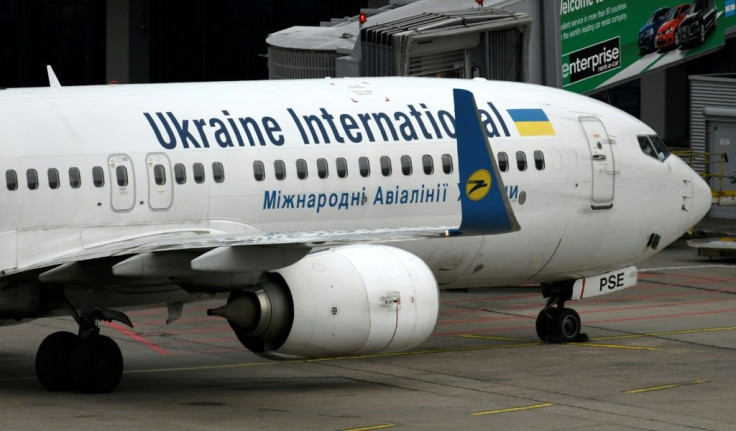Ukrainian Airlines Already Troubled Even Before Deadly Iran Crash

KEY POINTS
- UIA was formed in 1992 shortly after the fall of the Soviet Union
- After the collapse of its two main competitors UIA became Ukraine's dominant carrier
- The fatal crash in Teheran was the first in UIA's history
The Ukrainian aircraft that crashed after takeoff in Teheran early Wednesday was part of a troubled airline that has long sustained losses, faced rising fuel costs and was forced to cut unprofitable routes.
Late last year, privately held Ukraine International Airlines, or UIA, the country’s largest carrier, reduced or eliminated various services. For example, the airline had stopped operating flights to Beijing; Amman, Jordan; Minsk, Belarus, and Riga, Latvia, among others. As a result of cutting these and some other routes, the airline’s share of transit passengers going through Boryspil airport, its hub in Kyiv, has fallen from 28% to 23%.
UIA’s co-owner and chief of its supervisory board Aron Maiberg said 2019 would mark the third consecutive year the carrier would incur losses.
In 2018, UIA posted a net loss of about $100 million, nine times the loss it reported in the prior year.
Andrii Yarmak, head of the state air traffic regulator of Ukraine, also said UIA owed some $41.6 million in fees, penalties, and other payments to the government.
“The airline cannot reach its full potential here [in Ukraine] because of the country’s passengers’ weak purchasing power,” Maiberg said. “The share of domestic tickets should be between 60% and 65% because it’s the home market where a local airline [usually] has many benefits its competitors lack. But we don’t have that advantage.” Maiberg noted that UIA’s share of local market is below 35%.
UIA has entered into negotiations with Ukraine’s government in a bid to prevent further losses.
“We are saying that we can no longer subsidize our routes. The airline has exhausted its own resources. If we don’t get reimbursement, the only way to make our status [healthier] is by suspending [more unprofitable] routes,” Maiberg warned.
He added Ukrainian airlines should receive additional compensation for having to navigate around Russian airspace. Since the conflict between Russia and Ukraine erupted in 2014 Ukrainian carriers were prohibited from flying over Russian territory, leading to higher fuel costs for UIA and forcing the airline to make circuitous changes on various routes to Central Asia, the Middle East and India.
Steep fuel excise taxes also cut into the airlines’ profits. Serhiy Kuyun, director of A-95 Consulting Group of Kyiv, said UIA annually overpays $7 million to $8 million on fuel due to excise taxes that don’t exist in the European Union .
“We’re now spending an extra $12,000 for the flight from Kyiv to Almaty [Kazakhstan], $17,000 to Nur-Sultan [Kazakhstan] and $5,000 to Baku [Azerbaijan], for example,” Maiberg noted. “If we operate a Boeing 767 to Bangkok we pay an additional $7,000 and $10,000 if it’s a B777. So, in four years, this has added up to [a total of] $216 million of extra spending on fuel and avoiding Russian airspace, and the latter problem accounts for the bulk of this money.”
UIA has also struggled to compete against budget airlines, particularly in the domestic Ukrainian market, making some of these routes unprofitable. In 2018, foreign budget carriers, including Ryanair of Ireland and Wizz Air of Hungary, either entered the Ukrainian market or expanded their presence in the country.
However, UIA has been considered a relatively safe airline by global aviation authorities and the recent fatal crash in Teheran was its first. There are now indications that the aircraft was accidentally shot down by Iranian missiles.
UIA was formed in 1992 just after the collapse of the Soviet Union. Initially it competed directly with state-owned carrier Air Ukraine, which eventually went out of business in 2002. Another airline, the private carrier Aerosvit ceased operations in 2013 -- thereby making UIA the dominant airline in Ukraine.
After the departure of Aerosvit, UIA expanded its routes to Europe, the Middle East and Central Asia eventually boasting a fleet of 42 aircraft. UIA started making transatlantic flights to New York in 2014 and Toronto in 2018 – both cities with large Ukrainian communities. (The doomed passengers flying out of Teheran were mostly traveling to Toronto).
UIA began flying to Teheran in 2014, first running service three times per week on the Boeing 737 aircraft then increasing the frequency of flights to seven times per week due to the route’s popularity.
At one time Ukraine’s government owned a 61.6% stake in UIA, but in 2011, the government sold off its shares for $36.2 million. The airline is now largely owned by Israeli businessman Maiberg and Ukrainian oligarch Ihor Kolomoisky.
Interestingly, Maiberg and Kolomoisky also formerly owned Aerosvit, which filed for bankruptcy in 2012 and went out of business the following year.
British consultancy Skytrax rated UIA as a two-star airline (out of a maximum five stars). Customer reviews of the airline repeatedly criticized its poor service, rude, inexperienced staff, uncomfortable seats and bad food.
Meanwhile, Ukraine’s State Aviation Service has banned Ukrainian airlines from operating flights in Iranian airspace until the causes of the disaster are fully determined. State Aviation Service said it will also conduct a study on the safety of UIA flights.
Ukrainian President Volodymyr Zelensky said that whatever the findings of the Iran crash probe, the airworthiness of Ukraine’s entire commercial aircraft fleet will be investigated.
© Copyright IBTimes 2024. All rights reserved.





















